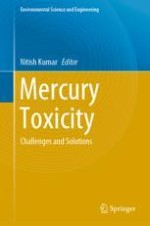2023 | OriginalPaper | Buchkapitel
6. Mercury Adsorption Using Biowaste Biochar: A Green Technology Approach
verfasst von : Abudu Ballu Duwiejuah, Ziblim Abukari Imoro, Ammal Abukari, Iddrisu Abdul-Mumeen, Abubakari Zarouk Imoro
Erschienen in: Mercury Toxicity
Verlag: Springer Nature Singapore
Aktivieren Sie unsere intelligente Suche, um passende Fachinhalte oder Patente zu finden.
Wählen Sie Textabschnitte aus um mit Künstlicher Intelligenz passenden Patente zu finden. powered by
Markieren Sie Textabschnitte, um KI-gestützt weitere passende Inhalte zu finden. powered by
